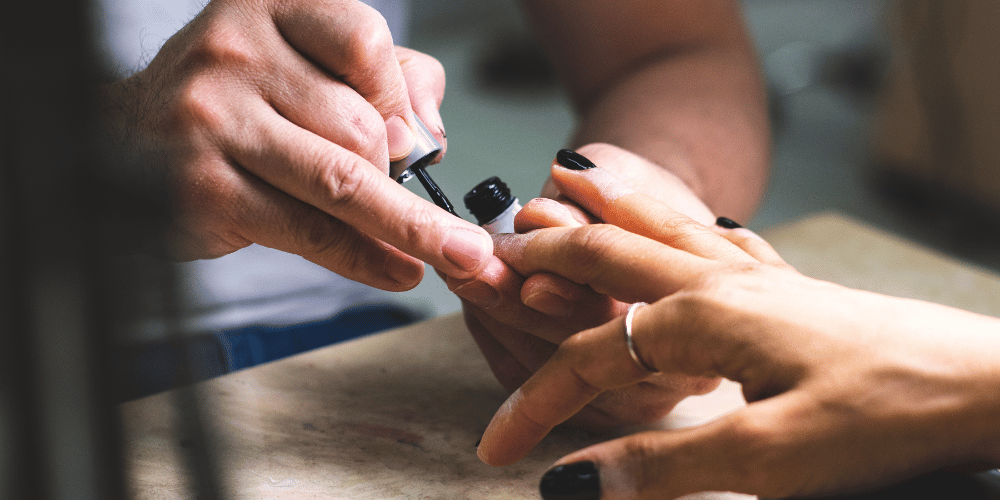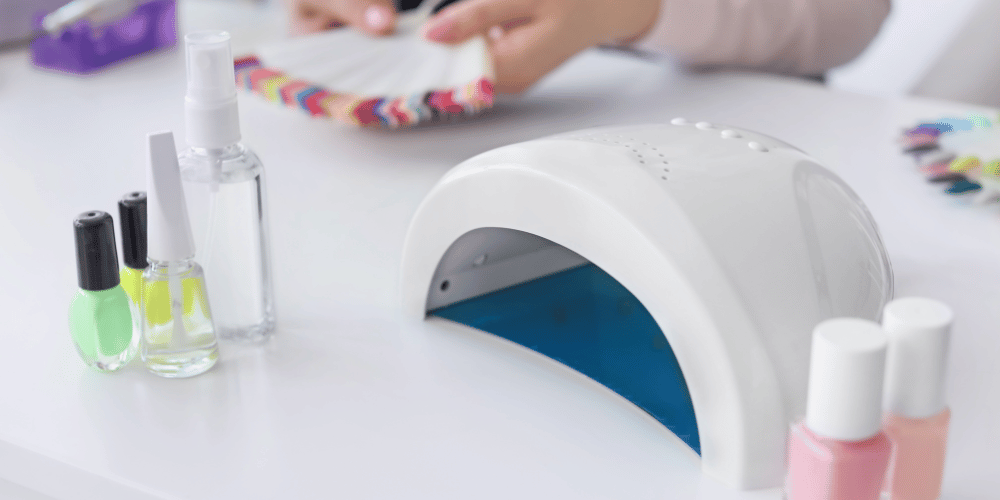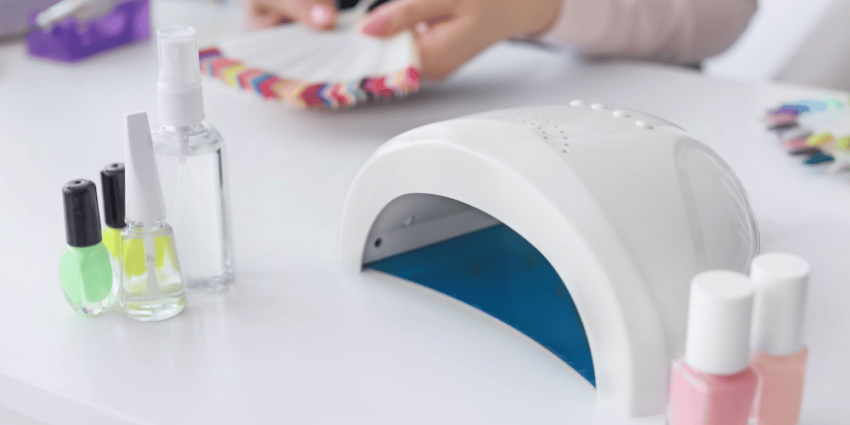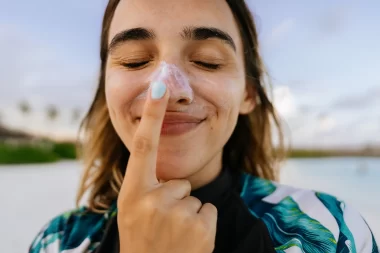If you’ve ever painted your nails, then you know the feeling of excitement that comes with it. You’re just about to finish up with perfect-looking nails! Until, you go to do something else and ruin them immediately because they haven’t dried yet! Taking too long for your nail polish to dry? Or worse, smudging it while it’s still not dry?
No one likes having to wait around for their fresh manicure or pedicure to dry. So how long does nail polish take to dry? In this blog post, we will explore the factors influencing how long it takes for your nail polish to fully harden so that you can be sure your mani or pedi will last as long as possible.
How long does it take for nail polish to dry?
Nail polish can take anywhere from a few minutes to a couple of hours to dry completely. The time it takes for your nail polish to dry will depend on the type of polish you are using, the thickness of the polish, and the temperature and humidity of your environment.
If you are using a regular nail polish, it is typically best to apply a thin layer and allow it to dry for at least a few minutes before applying a second coat. If you are in a hurry, you can use a quick-dry nail polish or top coat, which can speed up the drying time. Generally speaking, though, it is best to give your nails some time to air out and dry completely before doing anything else with them.

Factors that affect drying time
There are a few factors that can affect the drying time of your nail polish. The type of nail polish you are using, the temperature and humidity of your environment, and how many coats of polish you have applied can all play a role in how long it takes for your nails to dry.
If you are using a fast-drying nail polish, it will obviously take less time to dry than a regular or slow-drying formula. Similarly, if you are painting your nails in a warm and dry environment, this will speed up the drying process. Conversely, if you are painting your nails in a humid environment, it will take longer for the polish to dry.
Finally, the number of coats of polish you apply also affects drying time. If you only apply one coat of polish, it will obviously dry faster than if you apply multiple coats. However, even if you are applying multiple coats, each successive coat should dry relatively quickly since the first coat will have already started to set by the time you apply the second coat.
Ways to speed up the drying process
-To speed up the drying process of your nail polish, start by making sure that your nails are clean and free of any oils or debris. This will help the polish to adhere to your nails better and dry faster.
-Next, apply a thin layer of polish to your nails. Be sure to avoid getting any polish on your skin or cuticles, as this can also slow down the drying process.
-Finally, set a timer for two minutes and use a fan or hair dryer on the cool setting to help speed up the evaporation process. Once the timer goes off, check to see if your polish is dry and repeat the process if necessary.
Troubleshooting tips
If your nail polish isn’t drying, there are a few things you can do to troubleshoot the issue. First, make sure that you’re using a good quality base coat and top coat. These products help your nail polish dry faster and prevent chipping. If you’re still having trouble, try using a quick-dry nail polish or setting your nails under a fan. Finally, avoid using hand lotion or oil before applying nail polish, as this can prevent it from drying correctly.
If your nail polish is chipping, check that you are using a good quality base coat and top coat. These products help to protect your manicure and prevent chipping. Also, make sure that you’re not getting any water on your nails after applying the polish, as this can cause the polish to come off.
The Science of Nail Polish Drying
Nail polish is a lacquer that is applied to the fingernails or toenails to decorate and protect the nail plates. The formulation has changed little since its invention in China over 3000 years ago. Nail polish consists of a polymer and a diluent, with pigments and/or dyes added for color. The polymer gives the polish its solidity and resistance to chipping and scratching, while the diluent acts as a thinner, making the polish easier to apply.
Different types of polymers are used in different formulations of nail polish. The most common type of polymer is nitrocellulose, which was first introduced in 1932. Other types of polymers include acrylics, vinyls, and gel polishes. These different types of polymers affect the drying time of the nail polish; for example, nitrocellulose-based polishes dry faster than acrylics.
The ingredients in nail polish can also affect its drying time. Polishes that contain silicone dry more quickly than those without it. Some quick-dry polishes also contain ethyl acetate, which evaporates quickly and helps the polish to dry faster. However, polishes that contain these ingredients may be more likely to cause nails to become brittle and breakable.
The thickness of the nail polish layer also affects drying time; thinner layers will dry more quickly than thicker ones. To speed up the drying process, some people use a fan or a hair dryer on the low setting to help circulate air around the nails.
The environmental conditions in which the polish is applied also affects drying time. Applying nail polish in a warm, dry room will speed up its drying process, whereas an overly humid environment can slow it down.
How to Make Nail Polish Dry Faster
Assuming you’re referring to regular nail polish and not gel or shellac, there are a few things you can do to make your nail polish dry faster.
First, make sure you’re using a good base coat. This will help your polish adhere to your nails and prevent chipping.
Next, try using a quick-dry top coat. These top coats contain ingredients that help the polish dry faster.
Finally, if you’re in a hurry, you can try using a hair dryer on the cool setting. Hold the dryer about 12 inches away from your nails and move it around so that all of the polish is getting evenly dried.
The Best Ways to Prevent Smudging
There are a few things you can do to prevent smudging your nail polish. First, make sure you have clean, dry nails before you start painting. If your nails are oily, they will cause the polish to smudge.
Second, use a base coat before applying your color. This will help the color adhere to your nails and prevent it from smudging.
Third, be sure to apply the polish in thin coats. Too much polish on your nails will make them more likely to smudge.
Finally, let your nails dry completely before doing anything that might cause them to smudge. Avoid touching them or getting them wet for at least an hour after you’ve applied the polish.

When to Apply a Top Coat
When it comes to top coats, there are two different schools of thought: those who apply them after every coat of polish, and those who only apply them once the final coat has been applied. Personally, we think there’s no harm in using a top coat after each layer of polish – it can actually help speed up the drying process (just make sure you wait a few minutes in between coats so that the top coat doesn’t start to pull off any wet polish). If you’re short on time, though, feel free to just apply a top coat after the last layer of polish.
Conclusion
As you can see, the drying time of nail polish depends on a few factors. While it can be frustrating to wait for your nails to dry completely, following these tips should help reduce your wait time and allow you to enjoy your freshly painted nails sooner. If you are in a hurry, using a fast-drying top coat or special quick-dry solution could be helpful too. With patience and some practice, you will soon become an expert at picking the perfect polishes that suit your needs and won’t take eons to dry!










Leave a Reply